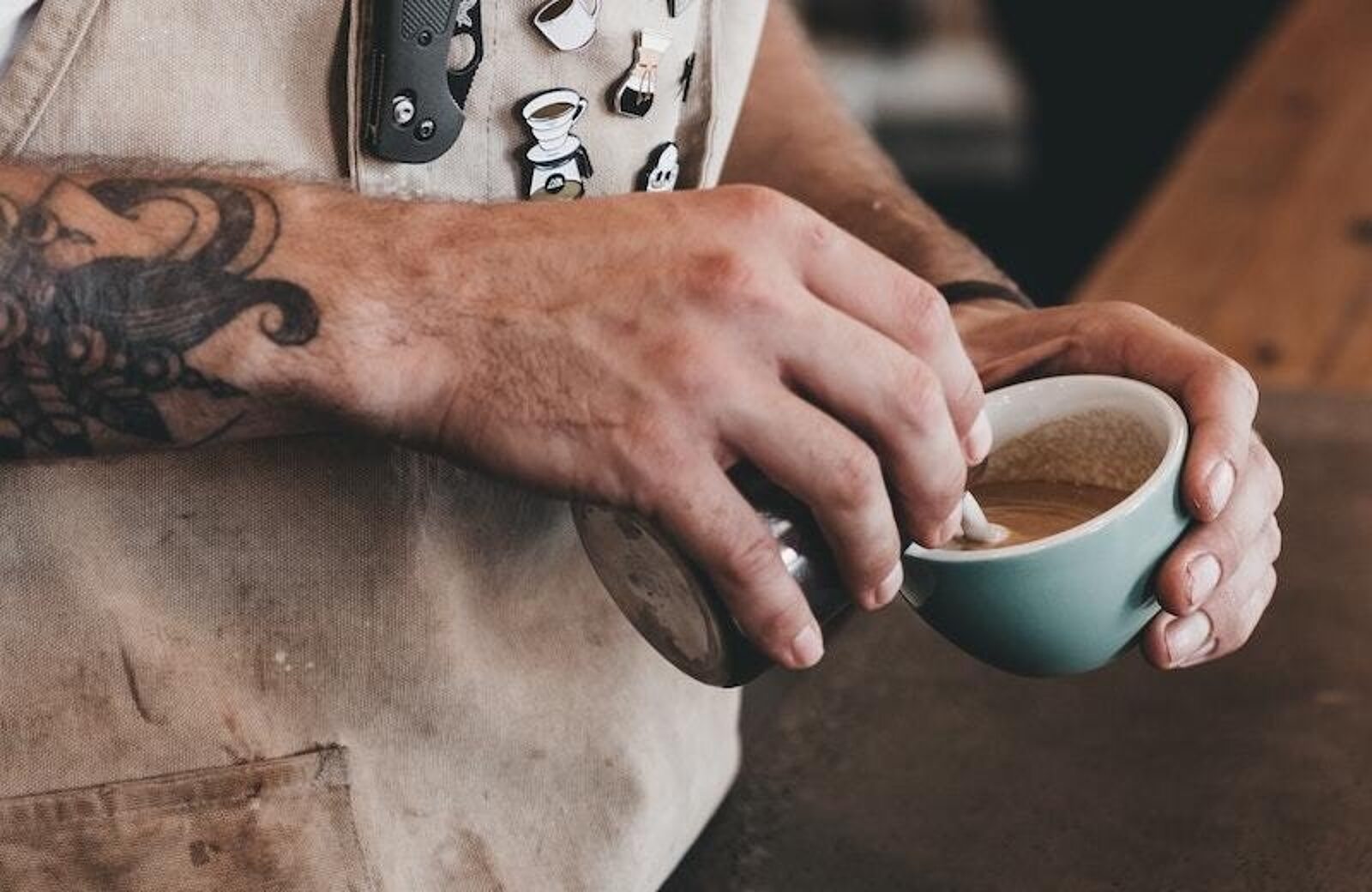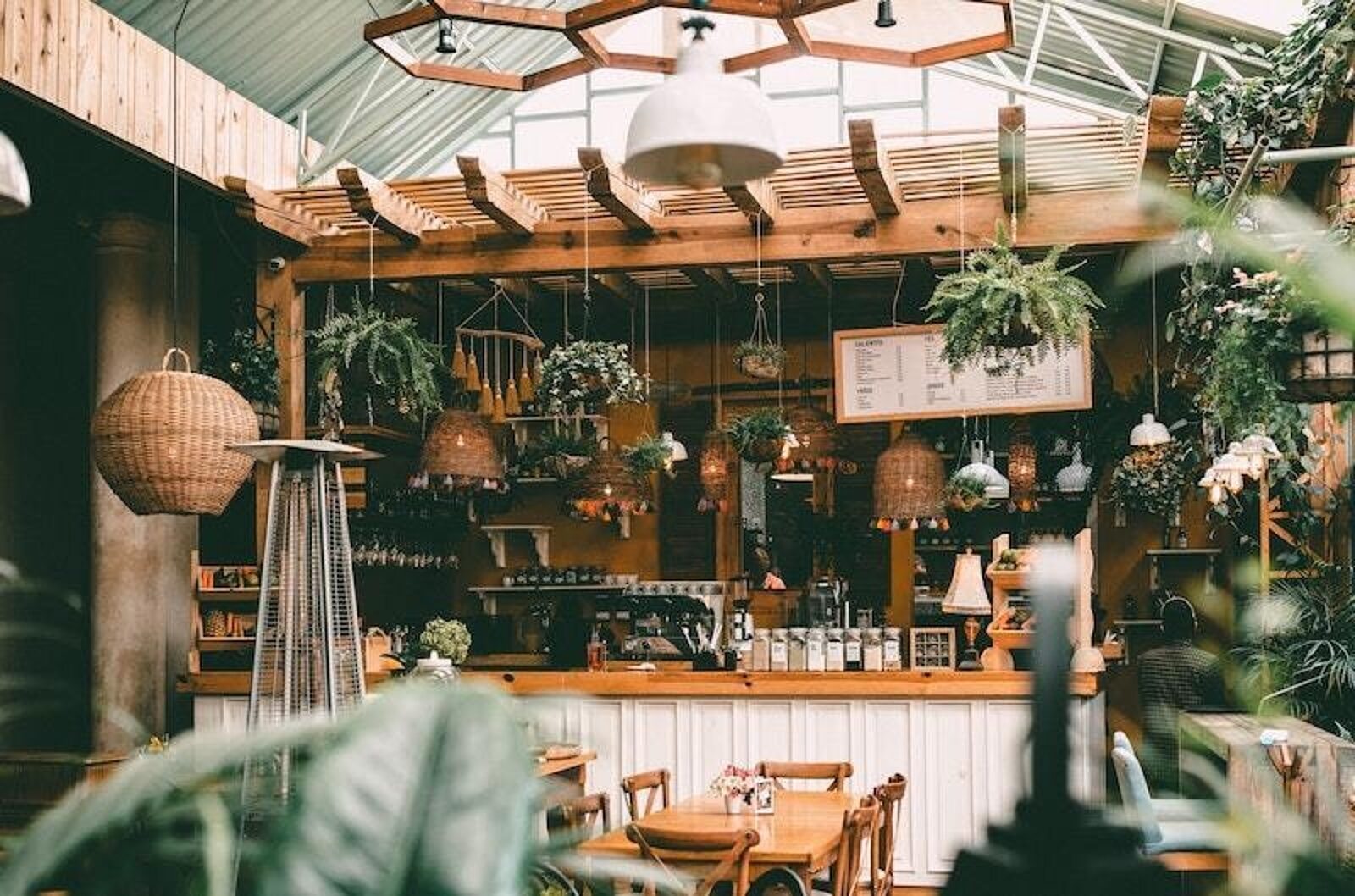Barista’s Guide to Different Types of Cold Brew and Iced Coffee
Tyler MartinezAuthor
One of my sayings as a long-time barista and coffee connoisseur is “No one makes bad iced coffee.”
Why? Chilling coffee mitigates some of the harsh notes that would otherwise be present. And having iced coffee with milk doesn’t feel anywhere as blasphemous as dumping cream into a single-origin pour over.
Learn from a seasoned barista how to make and serve iced coffees and cold brews in your restaurant, bakery, or café.
Iced Coffee 101
Iced Coffee vs Cold Brew
The difference between cold brew and iced coffee is that iced coffee is brewed with hot water while cold brew is brewed with cold water.
There are positive qualities when it comes to the flavor, aroma, and body of each, but I’ll explain later why cold brew is objectively superior to iced coffee — and why it’s taken off in so many coffee shops around the country.
Many iced coffees are made with blends of South and Central American beans, which are easy to access consistently in the US. Nut, honey, caramel, and chocolate flavors are common in iced coffees because of the brewing process and origin of the beans. Iced coffees have about the same caffeine content as a similar volume of drip coffee.
How to Make Iced Coffee
The simplest way to make iced coffee is to brew a concentrated batch of hot drip coffee and dilute it quickly with ice.
Start by grinding enough of a medium or dark roast for two batches of a small pot of drip coffee. A good ratio for hot drip is 1g of coffee to 17g of water. Double the weight of grounds so that the drip will be approximately double the strength in both caffeine and flavor.
As with any brewing method, the size of the grind is important. Some baristas use the same medium grind that they would for drip when making iced coffee. Others, like myself, prefer to use slightly more coarse grinds so that fewer of the bitter notes are extracted in the brew.
It’s best to brew coffee directly over about three-quarters as much ice as the amount of water used in the small drip cycle. But you could also dilute the batch of brewed drip with the same amount of ice.
Serve over ice and enjoy it black, or with flavors or syrups, milk or cream. Store iced coffee in the refrigerator for up to 5 days before replacing with a fresh batch.
Instant Iced Coffee
There are some high-quality instant coffee powders out there. But it’s always best to make each glass of instant iced coffee to order, so the grounds don’t settle after sitting.
Japanese Iced Coffee
Japanese iced coffee, also known as an iced pour over, is a way to make a small, controlled batch of iced coffee. The method includes brewing directly over about half as much ice as the hot water you used to brew.
There are a couple of tricks to help baristas master this method. You might grind your beans a little more finely, or pour intermittently rather than consistently. I also use a 1g:15g ratio of coffee to water for pour overs, but 1:16 is standard.
Avoid grinding the coffee too fine, which inhibits the flow rate of the pour over. It’s important to keep as much of the grounds submerged as possible when brewing, so consider that if attempting an intermittent pour. The goal is to maintain the same 3:30-5 minutes/cup time range of the hot pour over method, to create as close to double strength a concentrate as possible.
One of the great advantages of the pour over in general, and iced pour over especially, is the versatility. Pour overs afford the barista a lot of control, and the ability to accommodate for a wide range of beans and flavor profiles.
Cold Brew 101
Cold brew is strong, sweet, syrupy, and versatile (since it can be made in either small or very large batches), and has become a staple of coffee culture worldwide. I still enjoy a hot pour over or cappuccino in the Fall and Winter, but the Spring and Summer are cold brew seasons.
How to Make Cold Brew
Cold brew is made with cool, filtered water and coarsely ground coffee. I use a ratio of 1g:12g for coffee to water, but a range from 1:10 to 1:15 is standard depending on the brewing method, beans, and environment. Cold brew has about 2 times as much caffeine as the same volume of drip coffee.
Many cold brew processes use a mesh or paper filter bag to hold the coffee grinds, and there are a number of reusable cold brew systems on the market. The simplest is the toddy method, which involves a large cloth mesh bag and a lidded bucket in which to submerge the coffee.
Be careful not to fill the filter bag too full – you want to give the coffee room to expand as it extracts water over the span of 16-24 hours. And as opposed to brewing in the refrigerator, I find that the best cold brews extract for 18 hours at room temperature, about 68-75° F.
Note that the extended extraction time and smaller ratio results in a rather concentrated cold brew coffee that is usually diluted with milk, water, or flavoring, although some people prefer to drink cold brew black over ice.
The extraction process naturally highlights astringent flavor notes, so it’s important not to over-extract, or use beans that are especially bitter. South and Central American beans are a favorite for cold brew, but I enjoy cold brews made with African and Asian coffees as well.
Japanese Cold Brew
This slow drip cold brew process is becoming popular in third-wave coffee shops across the country. Japanese cold brew relies on a large tower that drips cool water over medium/coarse ground coffee over 15-20 hours.
The towers themselves can be quite pricey, but the flavor profile of Japanese cold brew is unmatched. Single-origin coffees are especially well highlighted by this process, since it showcases acidic rather than bitter flavor notes. African and Central American coffees are my favorites for slow drip cold brew, but the process is great for beans of all origins.
New Orleans Iced Coffee / Cold Brew
There is a New Orleans tradition of adding chicory to coffee, which results in a dark, rich, cocoa-like cold brew that’s generally served with simple syrup and cream. I love adding chocolate too!
Nitro Cold Brew
Nitro cold brew is another fairly recent trend, that infuses dark cold brew with nitrogen in a keg barrel much like a Guinness. If you want to serve nitro cold brew in your coffee shop, café, bakery, or restaurant, keep in mind that you’ll need one of these keg systems.
Nitrogen bubbles create a small, tight foam that gives the cold brew a smooth and silky texture. If you’re brewing your own cold brew for nitro, it’s typical to start with an ultra-concentrated and dark solution, so the end result contains 2.5 to 3 times as much caffeine as a regular cup of coffee.
Blended Coffee
There are a few ways of making blended coffee – with cold brew or instant coffee concentrates or with espresso. Personally, I prefer using cold brew. Blending espresso tends to drastically change its flavor. A small amount of super-concentrated cold brew blended with ice, milk, and caramel sauce (or another fun flavor) is a decadent treat.
Restaurant Menu Templates
Use these menu templates as a starting point for your menu design or to give your menus a refresh.

Is this article helpful?
DISCLAIMER: This information is provided for general informational purposes only, and publication does not constitute an endorsement. Toast does not warrant the accuracy or completeness of any information, text, graphics, links, or other items contained within this content. Toast does not guarantee you will achieve any specific results if you follow any advice herein. It may be advisable for you to consult with a professional such as a lawyer, accountant, or business advisor for advice specific to your situation.



